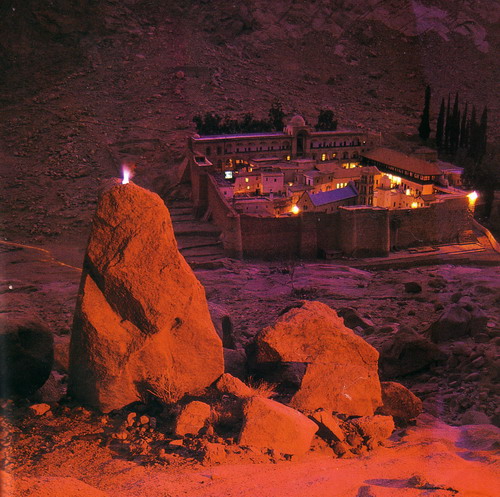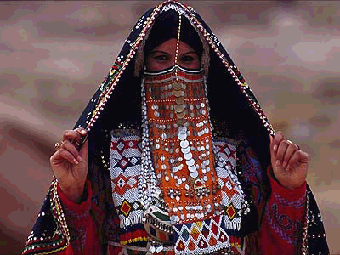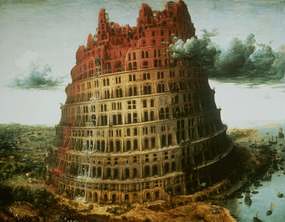Sinai
For our English readers there is a brief synopsis in the comment section…
Dedicato a Giulia l’archeologa.
 È un egiziano di una sessantina d'anni, anziano in viso con un sorrisino malizioso sotto la barba bianca che ricopre il suo volto da profeta. Adamnan è un uomo d'altri tempi: alto e massiccio dalla pelle arsa dal sole e raggrinzita dalle intemperie, indossa sempre un disdasha color turchese, sul capo la kafya, caratteristica dei nomadi, che usa per riparasi la faccia dal vento forte e dalla sabbia. Fa la guida nel deserto del Sinai. Il suo migliore amico e un vecchio beduino, Jaffar. Quando s'incontrano, Adamnan si ferma sempre sotto la sua tenda. Jaffar mette sul fuoco un bricco di metallo annerito dove versa un pugno di polvere scura che tiene in un sacchetto. Con destrezza serve la bevanda in tazze smaltate. Nella sua semplicità ha celebrato un rito antichissimo, quello dello shai bil nana, il tè alla menta beduino.
È un egiziano di una sessantina d'anni, anziano in viso con un sorrisino malizioso sotto la barba bianca che ricopre il suo volto da profeta. Adamnan è un uomo d'altri tempi: alto e massiccio dalla pelle arsa dal sole e raggrinzita dalle intemperie, indossa sempre un disdasha color turchese, sul capo la kafya, caratteristica dei nomadi, che usa per riparasi la faccia dal vento forte e dalla sabbia. Fa la guida nel deserto del Sinai. Il suo migliore amico e un vecchio beduino, Jaffar. Quando s'incontrano, Adamnan si ferma sempre sotto la sua tenda. Jaffar mette sul fuoco un bricco di metallo annerito dove versa un pugno di polvere scura che tiene in un sacchetto. Con destrezza serve la bevanda in tazze smaltate. Nella sua semplicità ha celebrato un rito antichissimo, quello dello shai bil nana, il tè alla menta beduino.Il tè nel deserto è scuro, forte e profumato. L'aria di straordinaria limpidezza, in cielo si sta accendendo un milione di stelle. E in questi momenti benedetti che Adamnan racconta la sua storia e quelle del deserto. Venne qui per la prima volta da bambino e da allora non se n'è mai più andato. Adamnan porta sempre con se due libri consumati, dalla copertina protetta da un foglio di plastica. Sono guida e breviario per chi viaggia in questo deserto: il testo sacro e I sette pilastri della saggezza di T.E. Lawrence, il leggendario Lawrence d'Arabia. Adamnan lo apre alle prime pagine e legge, guardandosi attorno con fare da attore consumato: «Erano poche le persone i cui antenati non avessero traversato il deserto in qualche epoca remota. Il marchio del nomadismo, la più profonda e aspra tra le discipline della società, segnava ciascuno di loro dalla nascita».
Il vecchio Jaffar sembra aver capito: chissà quante volte ha assistito a questa recita. Accenna un sorriso e, anche lui, apre una vecchia, consunta, copia di un antico libro. Legge: «E ponemmo sulla terra montagne immobili e ponemmo fra i monti dei passaggi, come fossero strade, per far si che gli uomini non avessero difficoltà nel loro cammino».
È un versetto della ventunesima sura del Corano, ma sembra la storia della creazione del Sinai. Il terzo deserto d'Egitto (dopo quello libico a ovest del Nilo e quello arabico a est) s'è formato per straordinari fenomeni geologici: tra distese di dune e spiagge fossili s'alzano isole di rocce e altipiani; tra le montagne di arenarie, calcari, graniti e basalti si aprono gli antichissimi uadi, corsi d'acqua fossili che, a volte, tornano a riempirsi per ondate violentissime.
In questo mondo, dall'alba dei tempi, s'intrecciano le vite di uomini come Adamnan e Jaffar, discendenti di quei nomadi celebrati da Lawrence che percorrevano le vie carovaniere prima ancora che i testi sacri fossero scritti. Le carovane arrivavano qui seguendo la via dell'incenso: dallo Yemen risalivano la costa occidentale della penisola arabica sino al Golfo di Aqaba e poi, attraverso il Sinai, proseguivano a occidente sino al Mediterraneo (65 tappe con i cammelli, 2 milioni 437mi1a 500 passi secondo i conti dello scrupolosissimo Plinio il vecchio).
Ancor oggi i beduini continuano a occupare tutta la penisola arabica, dalle coste dell'Oceano Indiano a quelle mediterranee. Ma per loro è impossibile stabilire un’identità nazionale: sono gli abitanti del deserto, proprio ciò che significa la parola araba bedu. E anche il Sinai sfugge a una definizione precisa: è molto difficile tracciarne un contorno preciso. I suoi confini, infatti, si dilatano a est lungo la valle dell'Aravà, un lunghissimo uadi che collega il Mar Morto al Golfo di Aqaba, lungo la via carovaniera dei Nabatei. A nord si distende tra le pietre del Negev.
Qualunque sia la verità, il Monte Sinai, il Gebel Musa che si trova nel sud della penisola, resta la dimora ideale di El Shaddai, il dio della Montagna, cosi come si manifestò ad Abramo, scenario perfetto per i versetti dell'Esodo.
A 2.285 metri, in vetta al Sinai, si vive un'esperienza che unisce cristiani, ebrei e musulmani. La montagna non viene scalata: vi si entra come in un tempio, con la sensibilità di un'amante che assapora ogni attimo di quest’unione ancestrale tra uomo e natura, tra mito e rito.
Si parte alle due di notte, a piedi o a dorso di cammello. Meglio a piedi, cercando un ritmo regolare. Poco a poco gli occhi si adeguano al chiarore diffuso dalle stelle. Si procede lentamente, sinché si giunge all'ultimo tratto: 700 gradini che si dice siano stati scavati da un monaco in penitenza.

S’arriva in cima poco prima dell'alba: è un momento di stanchezza e di disillusione. Ma poi, appena il sole comincia a liquefarsi sulle montagne tutt’intorno, si benedice ogni passo che ci ha condotto quassù: in pochi minuti la luce attraversa ogni possibile e immaginabile tonalità del rosso. Pochi attimi e i rossi diventano prima arancioni e poi gialli, la temperatura aumenta. È il momento di ridiscendere lungo una stretta gola che conduce all'oasi di Feiran. Qui, nella prima meta del VI secolo, 1'imperatore Giustiniano fece costruire il monastero dedicato a Santa Caterina. Dall'alto appare come una fortezza rettangolare circondata da spesse mura: in questa cittadella i monaci greco-ortodossi custodiscono la più grande collezione del mondo di icone e una biblioteca ricca di oltre 3.500 antichi manoscritti. Ai pozzi fuori le mura le donne di un accampamento beduino riempiono otri d'acqua.
 A vederle, il volto coperto da un prezioso burqa, un velo nero cui sono attaccati monili e monete d'oro, sembra d'essere ancora al crocevia delle carovane che da qui raggiungevano il mare seguendo lo uadi Feiran.
A vederle, il volto coperto da un prezioso burqa, un velo nero cui sono attaccati monili e monete d'oro, sembra d'essere ancora al crocevia delle carovane che da qui raggiungevano il mare seguendo lo uadi Feiran.Oggi si può attraversare la frontiera con la Giordania e procedere ancora verso nord est. Dopo pochi chilometri ecco una deviazione che ci fa ritrovare le antiche piste nel deserto di Wadi Rum, uno dei luoghi legati al mito di Lawrence d'Arabia.
È anche chiamato La valle della Luna per lo straordinario scenario di guglie e pinnacoli d'arenaria che s'alternano a distese di sabbia.

Poco più a nord si trova una delle più famose città dell’antichità: Petra, chiamata la Città rosa per il colore che assumono i suoi monumenti all’alba e al tramonto. Il primo che appare allo sguardo stupefatto alla fine dell'As-siq, la strettissima gola delimitata da pareti verticali che era l’accesso segreto a Petra, e Al-Khaznah, il Tesoro, perché si credeva che al suo interno, oltre la grandiosa facciata scolpita nella roccia, fossero nascoste le ricchezze di un faraone.
Viaggiare in questo deserto, sulle tracce di antichi carovanieri, significa fondersi con una terra che ha la calda e profumata sensualità di un’amante insaziabile, e sulla vetta del biblico monte benedirete ogni passo che vi ci ha portato...



12 Comments:
There are moments in Sinai when one feels as if the history of all the world can be read in its stones. Indeed, the land here is a monument to the antiquity of life on Earth, from the fossilized reef animals of Ras Mohammed to the mines of El Maghara, whose copper fueled the Bronze Age. In many places visitors from thousands of years ago literally recorded their passage in stone, as at the Rock of Inscriptions near Dahab. And at Serabit El-Khadem, near ancient mining sites, archaeologists have discovered carvings that record the very earliest emergence of our alphabet.
All three of the West's great religious traditions--Judaism, Christianity, and Islam--know Sinai as a holy land, a vast expanse traversed time and again by prophets, saints, pilgrims, and warriors. Sinai is most familiar to many as the "great and terrible wilderness" through which the Israelites wandered for forty years. However, it was also the path by which Amr swept down into Egypt in 640 AD, bringing Islam in his wake. Even after the muslim conquest, the monks of St. Catherine Monastery (founded in 547 AD) continued to greet pilgrims to the site of the Burning Bush.
Many of the most memorable conquerors have passed through Sinai as well. Alexander the Great crossed at the head of a great army, as did Ramses II, Napoleon Bonaparte, and (in the opposite direction) Salah el-Din. The Arab-Israeli conflicts of this century raged across the Sinai as well, their passage still evident in the ghostly wreckage that marks certain parts of the Suez coast.
In recent years, and for the first time, the history of Sinai seems to be emerging as a story about the land itself--its artifacts, its people, and its extraordinary natural beauty--rather than the story of those who pass through that land. Today, it is the Sinai's brilliant coral reefs, its striking mountains and deserts, and its enormous cultural heritage that hold the future--once again, though in a very different way, the history of Sinai seems to be written in the land itself.
Comment taken from: Sands of Time - Sinai in History, http://www.geographia.com/egypt/sinai/history.htm
mata (again) henji ga osoku natte, sumimasen, shaman. kyou wa, fustukayoi dakara, atama ga hatarakenai (i'm hungover today, so my brain isn't working properly), which should indicate that my party last night was a success. hope that you had a good weekend yourself and that you are not in the same state as me. actually, the word for hangover is kind of funny. the kanji is literally "two days drunk".
the images of sinai are incredible, and i'd love to go and see it, touch the stones of history, as it were, one day. perhaps this is where you had your yummy camel steak? i haven't had the pleasure myself, but i have often wondered how it would taste. i'm guessing similar to deer or bison.
by the way, it's really considerate of you to include an english synopsis. very clever. one day i hope that my japanese gets good enough to make a (truncated) nihongo version of some of my posts.
and spanish, but it's slow in the going.
If you're gonna write in Italian, please have a translation option. I can't understand a thing!
In Firefox, the synopsis thingy doesn't work.
Ah.. the camel (cammello), yes it tastes in-between bison, deer and something else, the end result, however, it’s down right delicious! No, l’ho mangiato in Syria ( no, I ate it in Syria – Damascus)
My wkend? Umm went like a blink of an eye… I passed it mulling over Palestine, Israel and Lebanon.. I passed it sorting some new things for the blog ( we are now Google page rank 4) and I passed it in the park, near a lake, suking from a strawberry flavoured shisha and vehemently debating with friends about what I had mulled over earlier on…
The synopsis thingy is, or at least it was a real player embedded code for you my dear anonymous… just to P&^$%s you off;) in it you could hear a Bedouin fluting away the desert’s song under a star-filled sky…
The real synopsis ( and I cannot believe you did not see it.. have you ever thought to change your glasses?) is just c a couple of comments up…
Ciao.
He is an Egyptian of a sessantina of years, old in ace with sorrisino malicious under the beard a white woman who covers its face from prophet. Adamnan is a man of other times: massive high and from the skin burned from the sun and raggrinzita from the inclemencies, always wears a disdasha color turchese, on the head the kafya, characteristic of the nomads, that it uses for repairs the face from the gale and the sand. It makes the guide in the desert of the Sinai. Its better friend and an old Bedouin, Jaffar. When s'incontrano, firm Adamnan always under its is stretched. Jaffar puts on the fire a bricco of blackened metal where it pours a dark powder fist that it holds in a bag. With skill it serves the drink in enameled cups. In its semplicità it has celebrated an ancient ritual, that one of shai bil the dwarf, the tea to the Bedouin mint.
Leon, happy now, I've just given you a translation option using a virtual translator...
This is exactly why I preferred to put a synopsis that it's very close to what I wanted to say 9it tool me some time to find it), instead of translating it… the inspiration of a writer comes in different ways.. and one has to take it in the language it comes.. the Sinai came to me in Italian, now I had the option to write it in Italian or not to write it at all.. I chose the former …
And ps. Although you are very highly regarded and I greatly appreciate your comments… No, you ain’t gonna get a translation option
Ha, ha - I know well the evils of translation software. My students apparently think that I am stupid enough to accept papers written in this "style".
I think it's great that you are able to shoot off in whatever language strikes your fancy. Everyone should try to break the monolinguistic mode. Minna no sekaikan ni horogatte hoshii ne (I wish everyone would expand their worldview).
By the way, congrats on your Google ranking.
Good thing I translated this page from Google or I wouldn't understand a thing. You really need to get a translator for your blog if you want your English speaking readers to understand your posts. Heck of a long post.
Thank you very much Melinda!
I hope you enjoyed the translation, although I doubt it...
Google is good for french (not incredibly good, but passable), however, for italian is quite appaling..
ps. the previous comment was divided in two... oups.. Melinda you know your part, the latter was for good ol'Leon;)
please translate your posts to english.
it looks informative, but i could not understand them
Post a Comment
<< Home